On April 10, 1969, NASA formally announced the crew for Apollo 12, the sixth crewed Apollo mission. If all went well on the flights preceding it, Apollo 12 would make the second human lunar landing about four months after the initial landing. The astronauts would explore a different site than the one selected for Apollo 11, and plans called for two lunar surface excursions totaling more than five hours. The crew planned to deploy the Apollo Lunar Surface Experiment Package (ALSEP), a suite of science investigations, in addition to conducting the geology field work of documenting and collecting rock and soil samples for return to scientists on Earth for analysis.
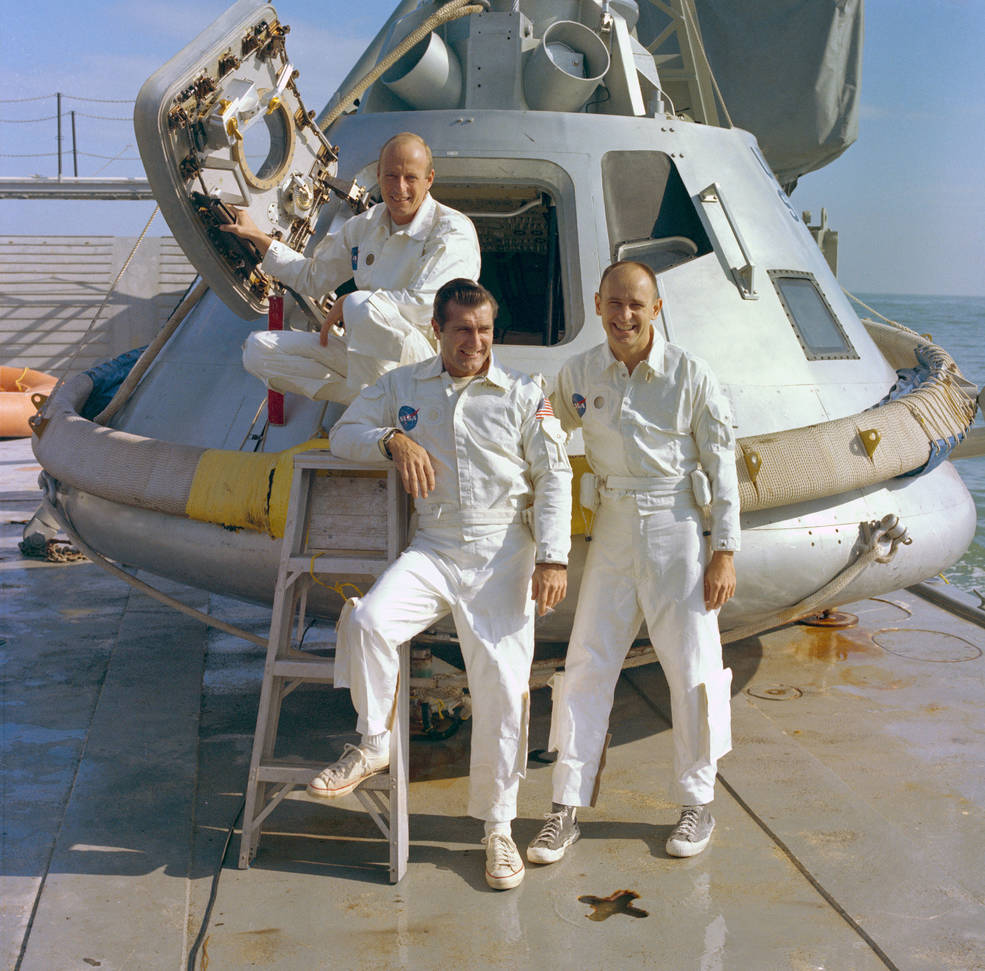
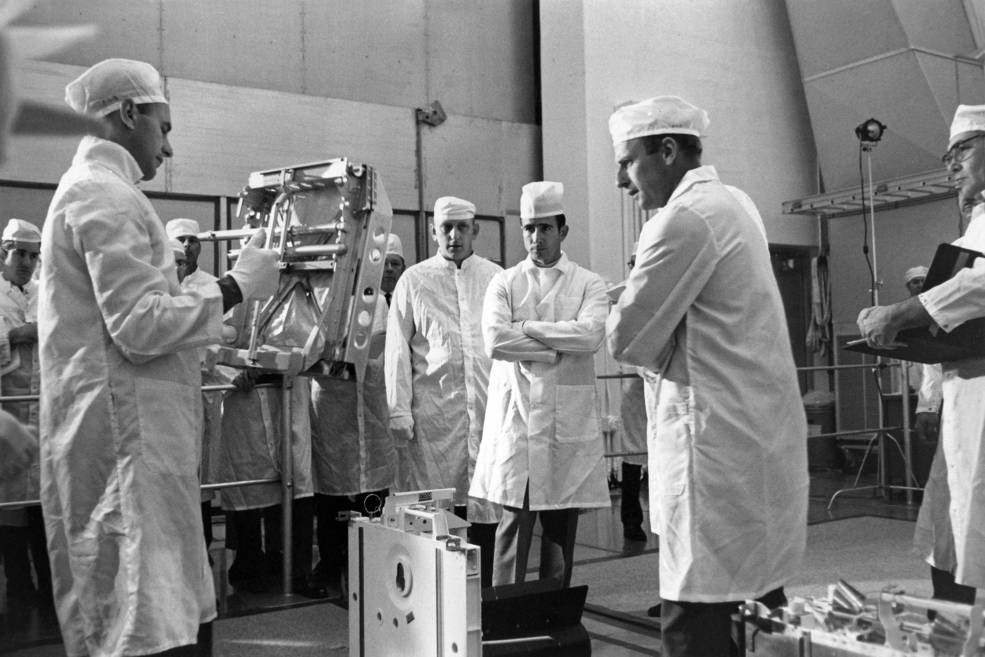
Left: Astronauts (left to right) Conrad, Gordon, and Bean pose in front of a boilerplate Apollo capsule during water egress training when they served as the backup crew for Apollo 9. Right: Apollo 12 prime crewmembers Conrad (at left) and Bean (at right) training with ALSEP equipment as backup astronaut Irwin (with arms folded) looks on.
The prime crew consisted of Commander Charles “Pete” Conrad, Command Module Pilot (CMP) Richard F. Gordon, and Lunar Module Pilot (LMP) Alan L. Bean. The three had served as the backup crew for the March 1969 Apollo 9 mission. Conrad had flown in space twice before, during the then record-breaking eight-day Gemini 5 mission in 1965 and with Gordon on his only previous mission during Gemini 11 in 1966, when they achieved a then-record human space flight altitude of 853 miles. Bean was making his first space flight.
The Apollo 12 backup crew of Commander David R. Scott, CMP Alfred M. Worden, and LMP James B. Irwin would be ready to fly the mission in case something happened to the prime crew. Scott had previously flown in space aboard Gemini 8 in 1966, the mission that accomplished the first docking in space and also made the first emergency landing, and more recently he served as the CMP aboard Apollo 9. Worden and Irwin had not yet flown in space, but Worden had served on support crews and Irwin was the commander of the crew who conducted tests with Lunar Module Test Article-8 (LTA-8) in 1968 to evaluate the Lunar Module in a vacuum chamber at MSC.
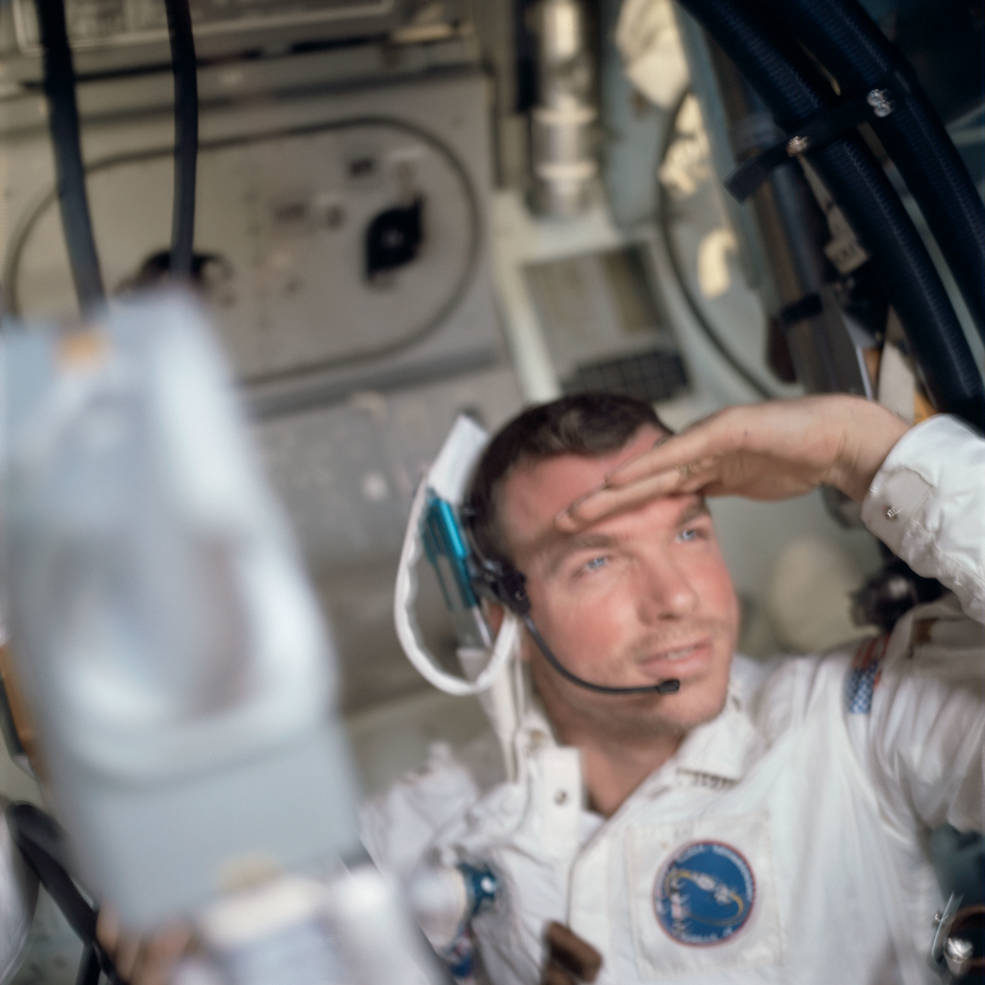
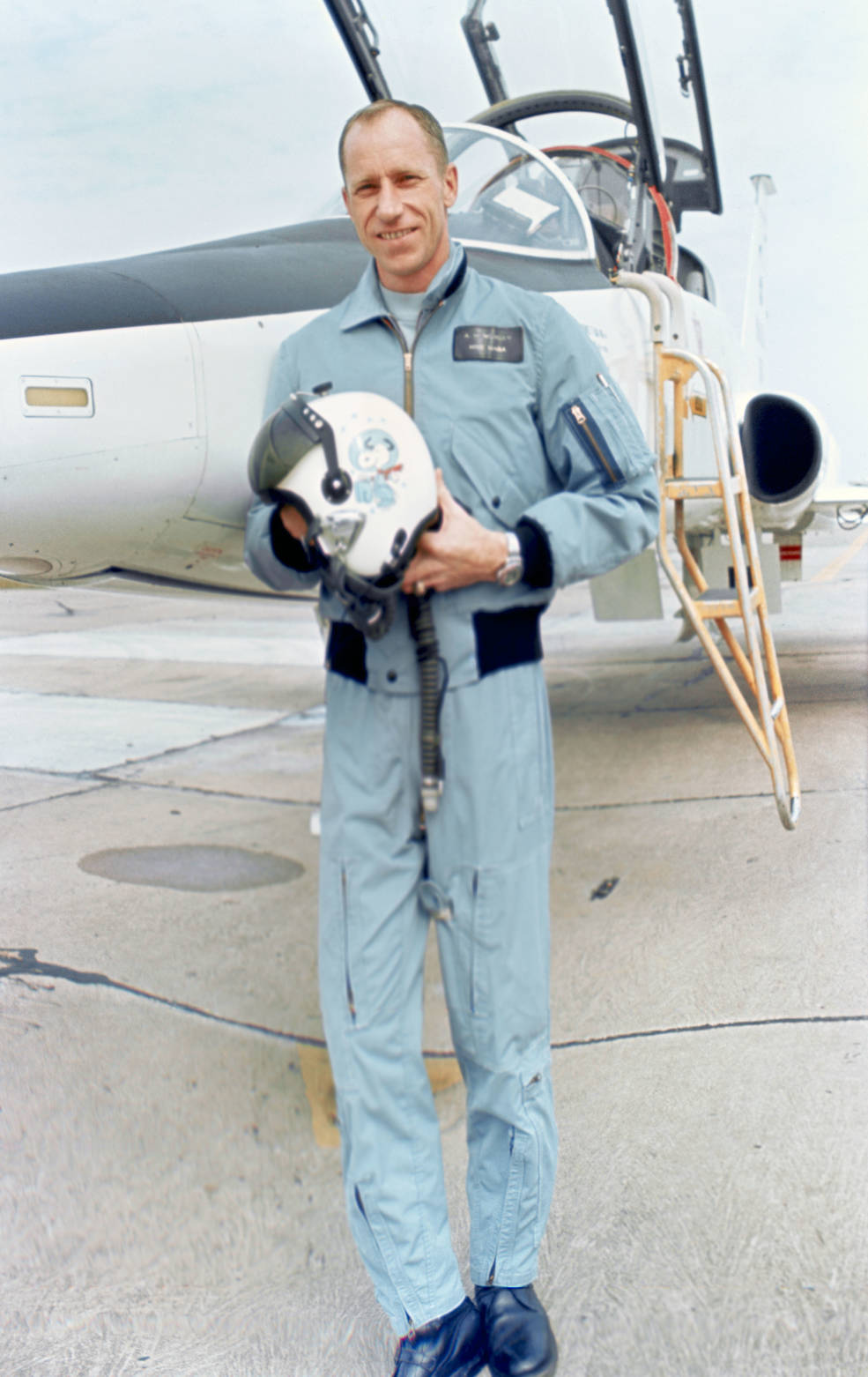
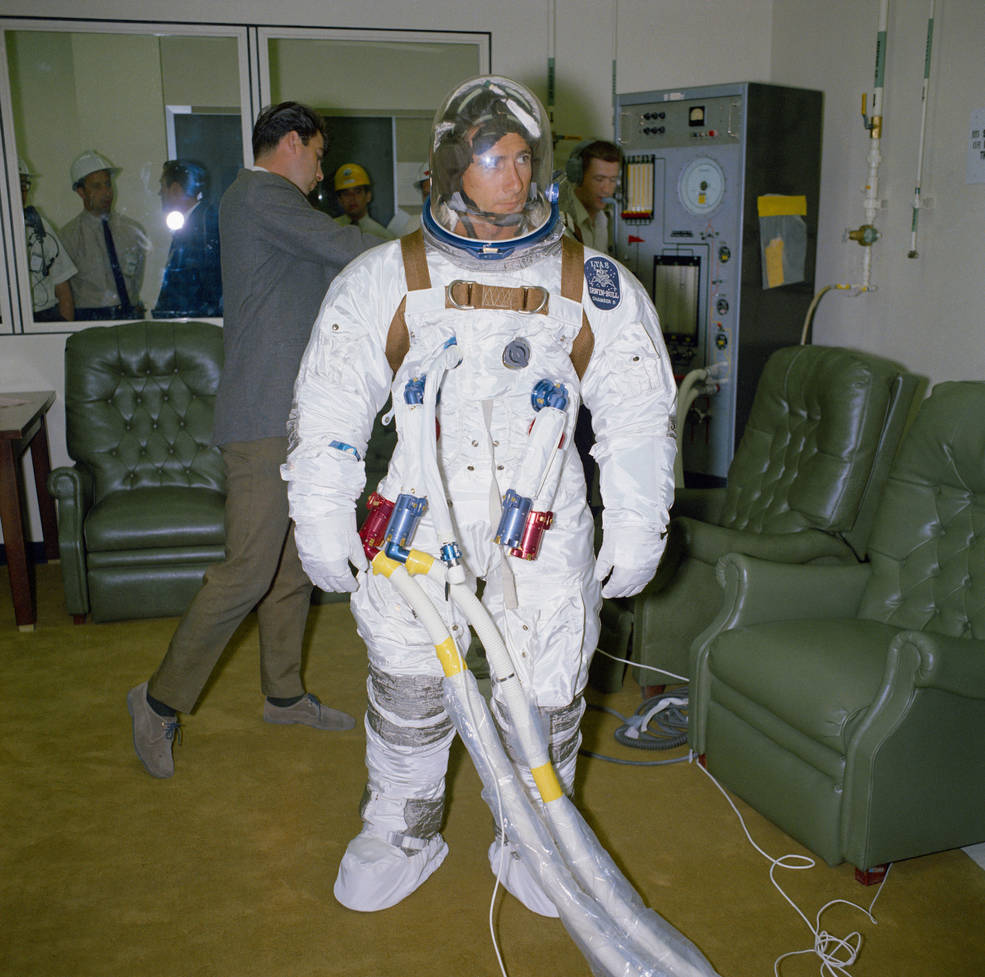
Left: Backup Commander Scott aboard Apollo 9. Middle: Backup CMP Worden during T-38 training.
Right: Backup LMP Irwin during LTA-8 activities in 1968.
Hardware for the Apollo 12 mission began arriving at the Kennedy Space Center (KSC) in March 1969. The Douglas Aircraft Corporation in Long Beach, California, shipped the Saturn V rocket’s S-IVB third stage to KSC on March 10. The rocket’s other two stages arrived later in April and May. The Lunar Module (LM) ascent and descent stages arrived on March 24 from their manufacturer, the Grumman Aircraft Corporation in Bethpage, New York. Workers at KSC mated the two stages in late April in preparation for integrated testing. North American Rockwell in Downey, California, shipped the Command Module (CM) and Service Module (SM) to KSC on March 28, where workers mated the two modules five days later in preparation for preflight testing in the altitude chamber. The ALSEP suite of experiments that the Apollo 12 crew deployed on the lunar surface arrived at the Kennedy Space Center (KSC) on March 25 from its manufacturer, the Bendix Corporation of Ann Arbor, Michigan. The crew trained with the ALSEP hardware at KSC on April 24.
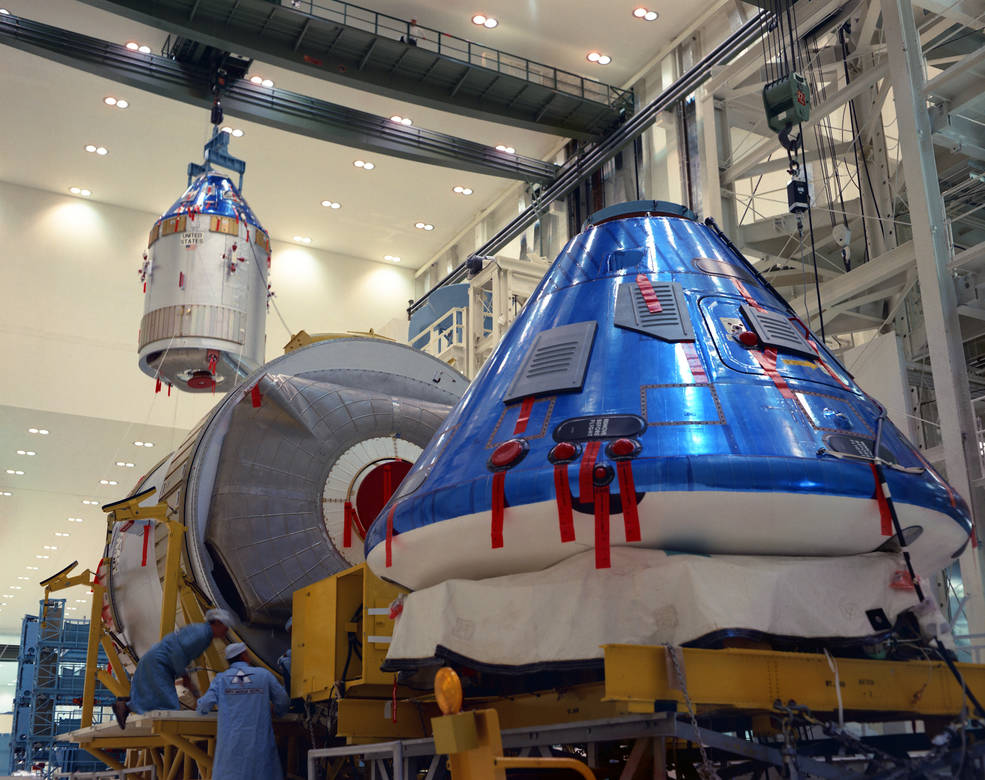
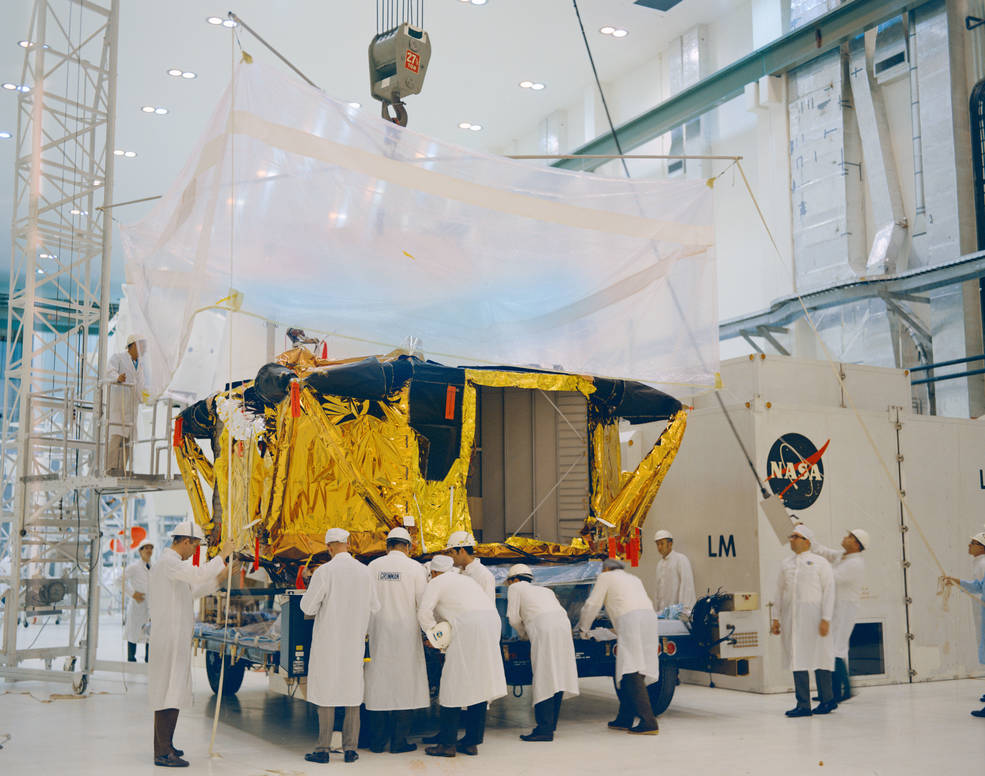
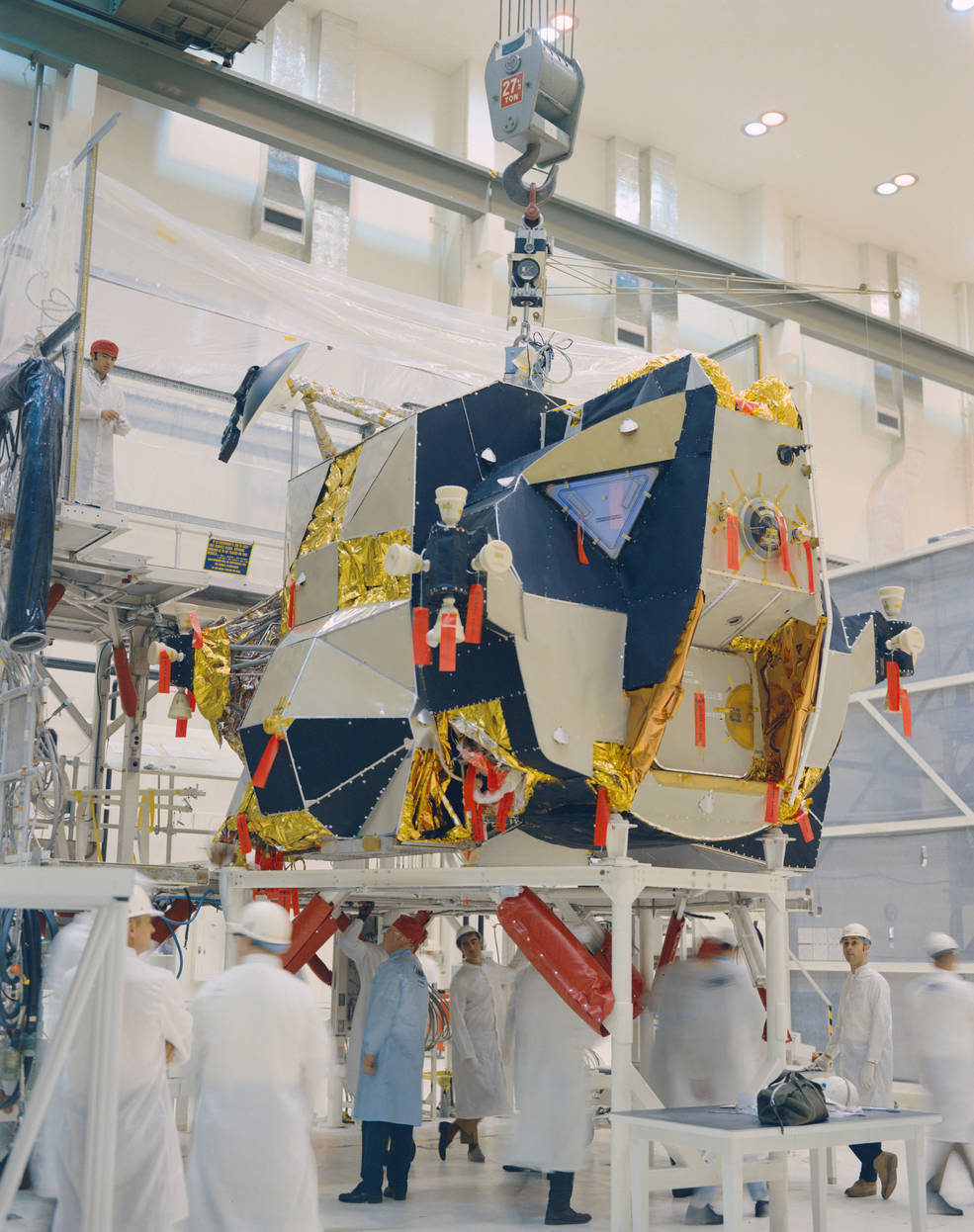
Left: Apollo 12 SM and CM in KSC’s MSOB shortly after their arrival; the Apollo 11 CSM can be seen in the background being hoisted by a crane.
Middle and right: The Apollo 12 LM Descent and Ascent Stages shortly after their arrival at KSC.
Astronaut biographies can be found at https://www.nasa.gov/astronauts
Read Bean and Gordon’s oral histories with the JSC History Office.





























